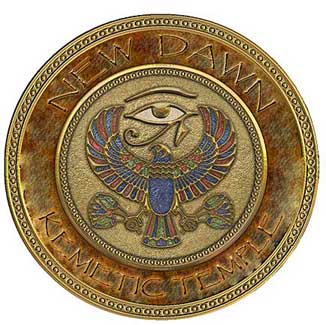|
|
|


The Amada Temple in Nubia, though small, nevertheless contains
some important historical inscriptions and is also significant as the oldest
of the Lake Nasser temples. For example, one carved on a stela on the rear wall
of the sanctuary in the third year of Amenhotep II describes an Egyptian military
campaign into Asia, and his bringing back the bodies of rebel chieftains to
hang on the walls of Thebes and one on the prow of his ship sailing through
Nubia as a warning. Another, carved on a stela on the northern side of the entrance
doorway describes a Libyan invasion of Egypt in the fourth year of Merenptah,
the son of Ramesses II.
This temple is located about 180 kilometers south of the High Dam, and was dedicated
to the important New Kingdom gods, Amun-Re and Re-Horakhty. It was originally
built on the orders of Tuthmosis III and his son, Amenhotep II during Egypt's
New Kingdom 18th Dynasty. The hypostyle hall was a later addition by Tuthmosis
IV. Seti I had a hand in some small additions, such as a large pylon with a
sandstone gateway abutting against the hypostyle hall, along with other 19th
Dynasty rulers including his son, Ramesses II, who seems to have involved himself
in some way with almost every Nubian temple built prior to his reign. However,
Ramesses II's restoration of the temple has been noted as rather a poor effort,
probably employing the use of local artists of inferior skill. Of course, Ramesses
II also added a number of his own temples to the Nubian landscape during his
reign.
Due to the rising waters of Lake Nasser after the construction of the High Aswan Dam, the temple was moved, together with the nearby Temple of Derr, to a new, higher location some 2.5 kilometers from its original site between 1964 and 1975.
The temple, which does retain much of its painted relief work including polychrome decorations, consists of a court with a brick wall with proto-Doric columns forming a rear portico. Tuthmosis IV enlarged it transforming the court into a pillared hall through the erection of twelve pillars in four transverse rows in front of the four columns, with inter-columnar walls between the outer pillars. The temple proper, which was built in sandstone, has a shallow transverse hall decorated with coronation scenes, a deep offering hall connected on either side to a small cult statue shrine for Re-Horakhty (south) and Amun-Re (north).
The painted reliefs within the temple are interesting, particularly one section where, in a high register devoted to Tuthmosis III, we find him worshiping Amun-Re, which is then harmonized by a lower register of a similar motif where Amenhotep II worships Re-Horakhty in the same symbolic theme. Unfortunately, Tuthmosis IV, better known as the heretic king, Akhenaten, who broke from religious tradition in his attempts to promote Aten, had chipped away representations of Amun. These were the images that Ramesses II had restored, but with inferior workmanship. Also, like many other Nubian temples, the early Christians made the structure a church capped by a cupola, and in the process, contributed their own damage. On the other hand, when these same Christians plastered over many of the reliefs, they in fact preserved many of them, making these depictions some of the finest remaining in any Nubian temple.
Beyond the original reliefs, there are some interesting graffiti, apparently inscribed during the 19th Dynasty that include scenes of the viceroy of Nubia, Messuy, which appear to show the royal uraeus added to the viceroy's brow. Other, more recent graffiti visible on the very top of the temple facade are crude representations of camels taht are though to have been either the work of Bedouins or travelers during the Middle Ages.